Nvidia GeForce GTX 970 And 980 Review: Maximum Maxwell
Power Consumption In Detail
Idle Power Consumption
[EDIT] Our original Nvidia GeForce GTX 980 reference sample suffered from a BIOS issue that caused a higher-than-expected power draw. We flashed the card with the reference BIOS and have updated the charts below with the new results. [/EDIT]
There’s a huge difference between the two Gigabyte graphics cards. Nvidia’s reference board is almost exactly in the middle between them. The GTX 980 WindForce OC gives us our baseline by idling just under 10 W, while the derivative 970 consumes almost 20 W. This (relatively) massive difference was measured on the same platform using the same measurement methodology. Nvidia’s reference graphics card comes in at 16 W, right between the Gigabyte boards.
Our best guess is that Gigabyte has a “golden sample” at work here. But it goes to show what could be possible from Maxwell if production is refined further. We weren’t able to get our hands on a reference Nvidia GeForce GTX 970, so we had to use a downclocked version of a board partner’s card instead.
| Power Consumption at Idle | Gigabyte GTX 980Windforce OC | GeForce GTX 980 Reference | Gigabyte GTX 970Windforce OC |
|---|---|---|---|
| PCIe Total | 3.99 W | 3.78 W | 4.56 W |
| Motherboard 3.3 V | 0.18 W | 1.93 W | 1.32 W |
| Motherboard 12 V | 5.05 W | 10.05 W | 13.50 W |
| Total | 9.22 W | 15.76 W | 19.34 W |
Gaming Power Consumption
These findings further illustrate what we said on the previous page about Maxwell and its ability to regulate GPU voltage faster and more precisely. The gaming-based power consumption numbers show just how much efficiency can be increased if the graphics card matches how much power is drawn to the actual load needed. The version of the GeForce GTX 980 that comes overclocked straight from the factory manages to use significantly less power than the reference version, while offering six percent more performance at the same time.
| Power Consumption while Gaming | Gigabyte GTX 980Windforce OC | GeForce GTX 980 Reference | Gigabyte GTX 970Windforce OC |
|---|---|---|---|
| PCIe Total | 137.38 W | 143.85 W | 132.70 W |
| Motherboard 3.3 V | 1.07 W | 2.81 W | 2.27 W |
| Motherboard 12 V | 34.98 W | 39.04 W | 42.84 W |
| VGA Card Total | 173.43 W | 185.70 W | 177.81 W |
Let’s take a look at the measurements in detail. The large load fluctuations are plain to see.
Nvidia GeForce GTX 980 Reference Card Measurement Results and Graphs
Gigabyte GTX 980 WindForce OC Measurement Results and Graphs
Stay On the Cutting Edge: Get the Tom's Hardware Newsletter
Get Tom's Hardware's best news and in-depth reviews, straight to your inbox.
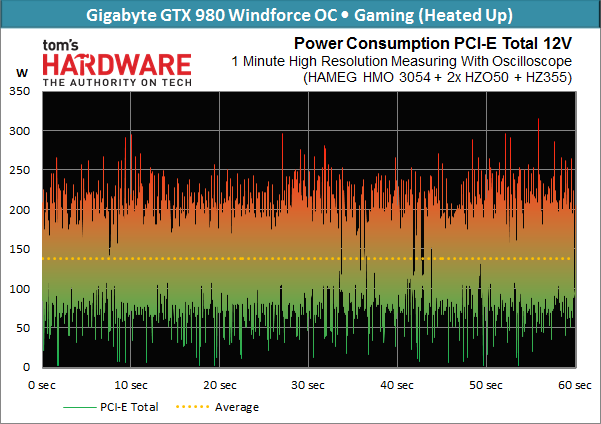
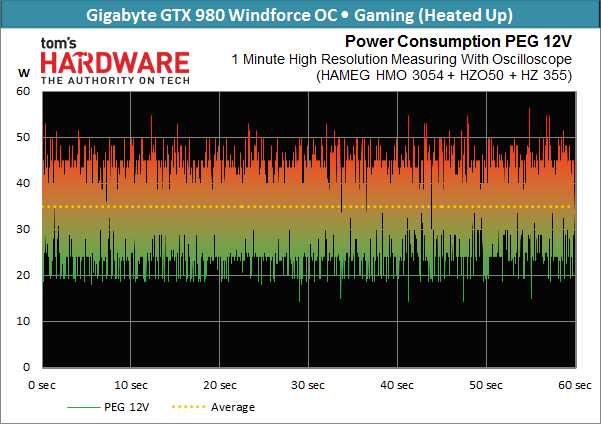
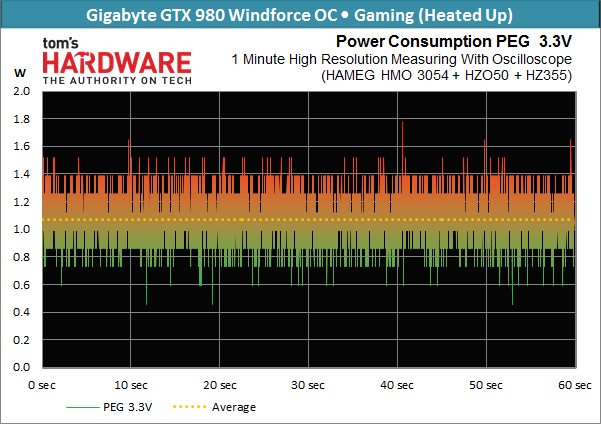
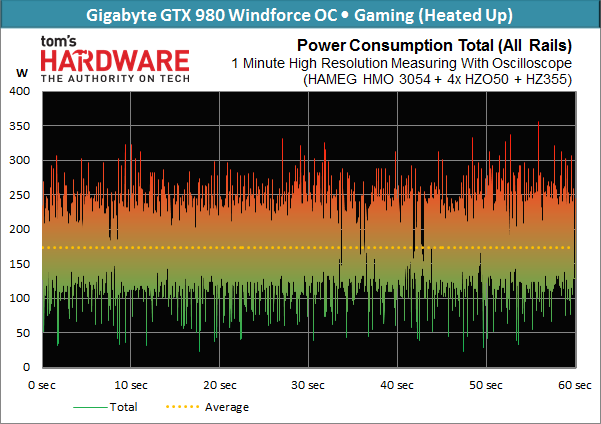
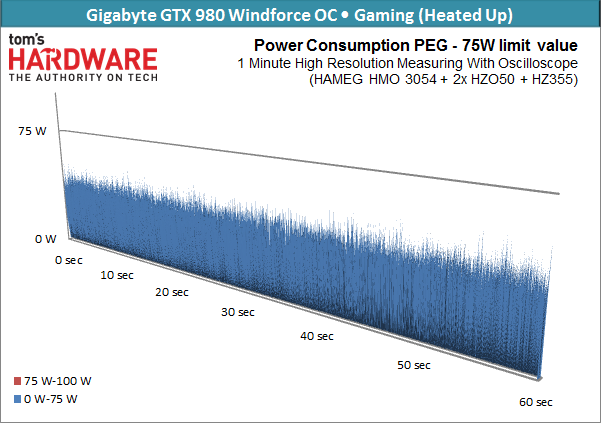
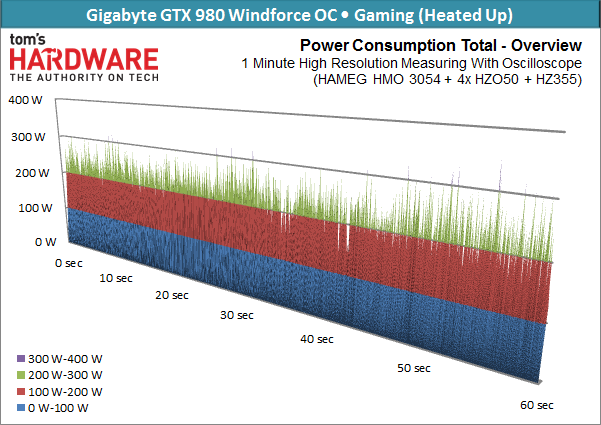
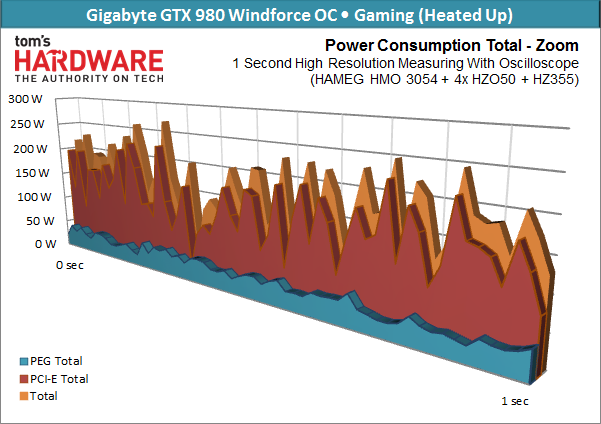
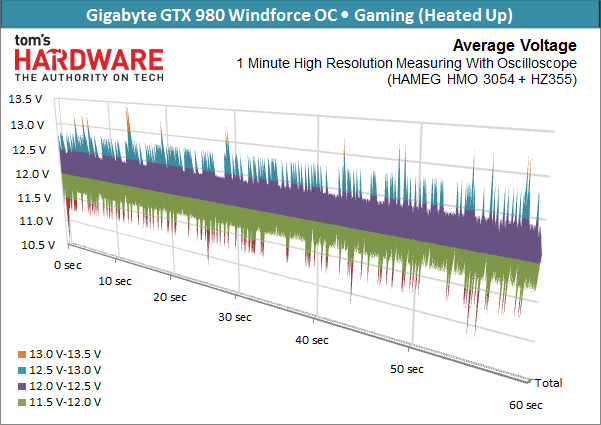
Gigabyte GTX 970 WindForce OC Measurement Results and Graphs
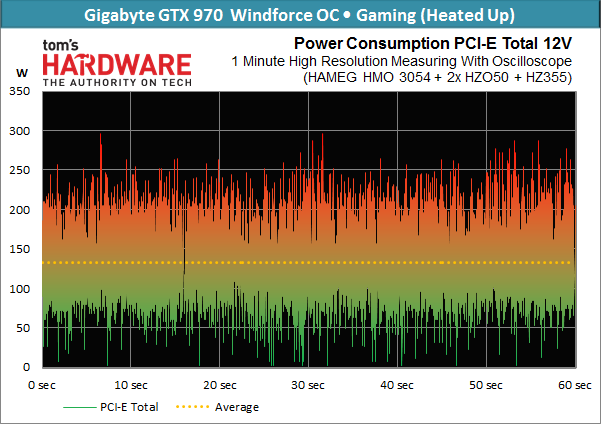
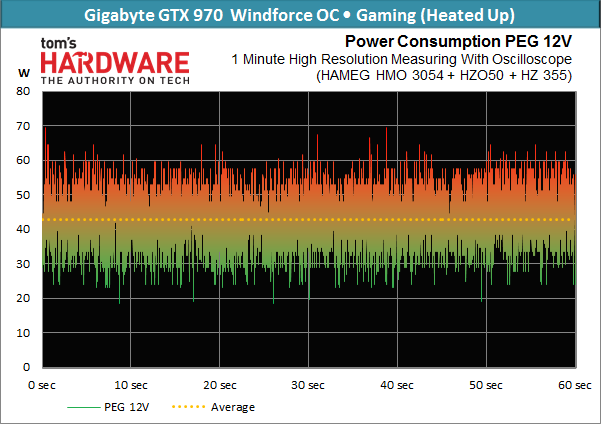
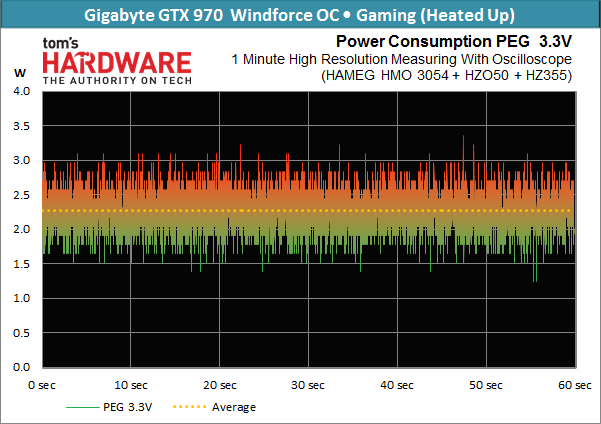
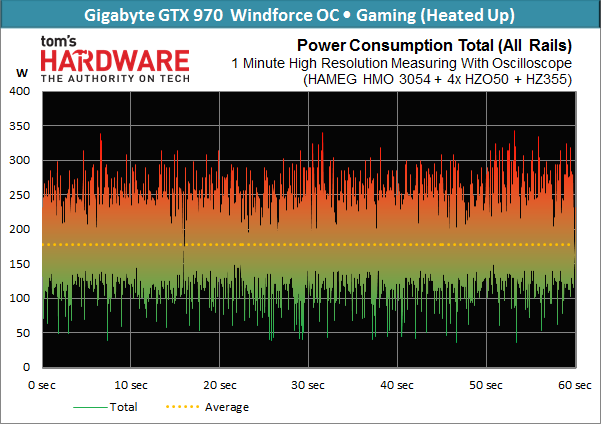
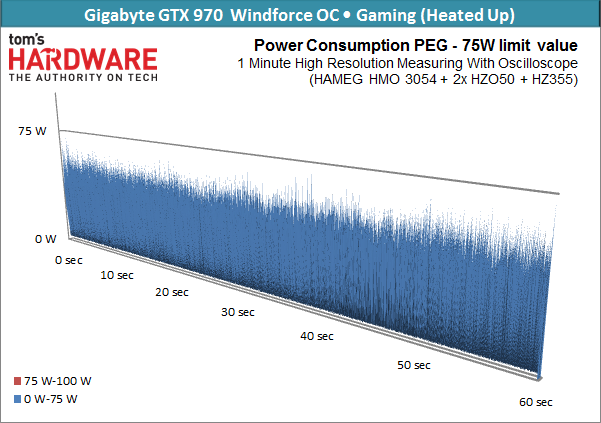
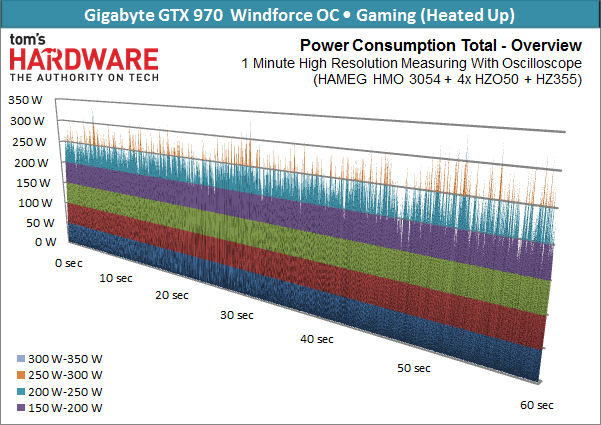
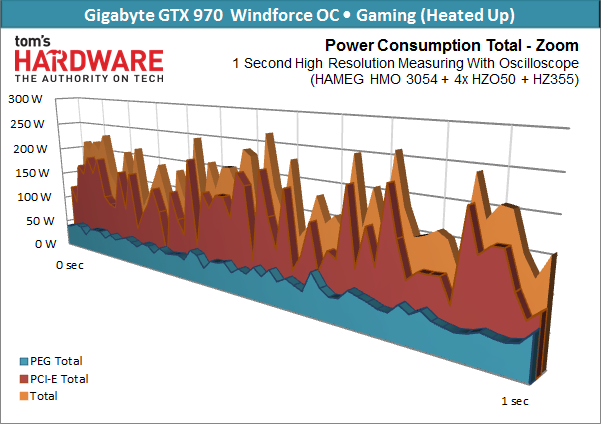
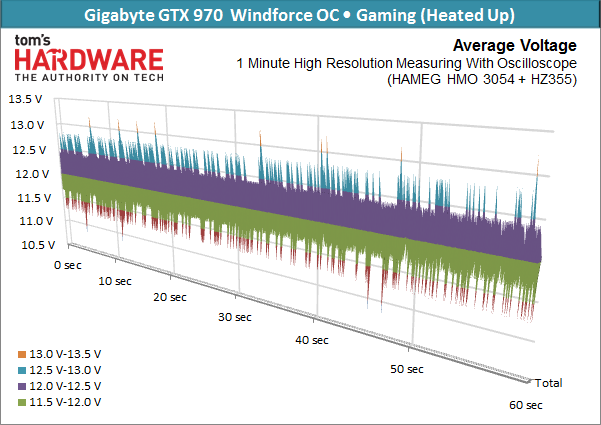
Stress Test Power Consumption
If the load is held constant, then the lower power consumption measurements vanish immediately. There’s nothing for GPU Boost to adjust, since the highest possible voltage is needed continuously. Nvidia's stated TDP becomes a distant dream. In fact, if you compare the GeForce GTX 980’s power consumption to an overclocked GeForce GTX Titan Black, there really aren’t any differences between them. This is further evidence supporting our assertion that the new graphics card’s increased efficiency is largely attributable to better load adjustment and matching.
| Power Consumption Under Max. Load | Gigabyte GTX 980Windforce OC | GeForce GTX 980 Reference | Gigabyte GTX 970Windforce OC |
|---|---|---|---|
| PCIe Total | 237.63 W | 122.70 W | 192.46 W |
| Motherboard 3.3 V | 0.98 W | 1,83 W | 2.15 W |
| Motherboard 12 V | 41.07 W | 52.83 W | 48.36 W |
| VGA Card Total | 279.68 W | 177.36 W | 242.97 W |
The values above have potential consequences for the everyday operation of these graphics cards, as they represent what can be expected when running performance-hungry compute-oriented applications optimized for CUDA and OpenCL.
That's not the only offering that makes a good impression, though. Nvidia's reference GeForce GTX 980 does well too, as long as you don’t focus on the idle power measurement. This isn't the same result as custom models with higher power targets (up to 300 Watts for the GTX 980), though, when compute-based stress tests are run. A taxing load just doesn't give Maxwell room for its optimizations to shine.
Note that the GeForce GTX 980's stress test power consumption is actually a few watts lower than the gaming result. This is likely due to throttling that kicks in when we hit the thermal ceiling.
Finally, let’s take a look at the detailed measurements. The much smaller load adjustments are illustrated graphically below. Pay particular attention to the reference card’s small drops when it hits the thermal limit.
Nvidia GeForce GTX 980 Reference Card Measurement Results and Graphs
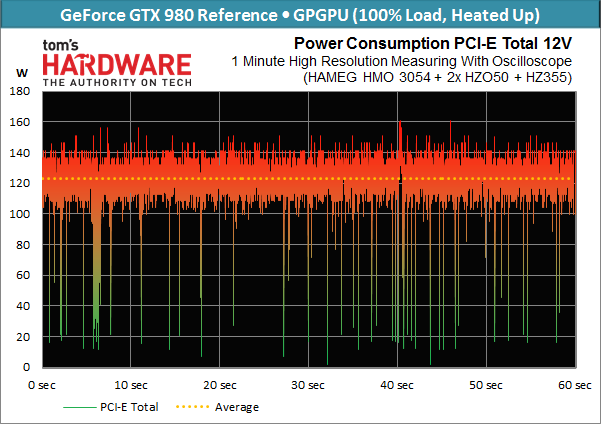
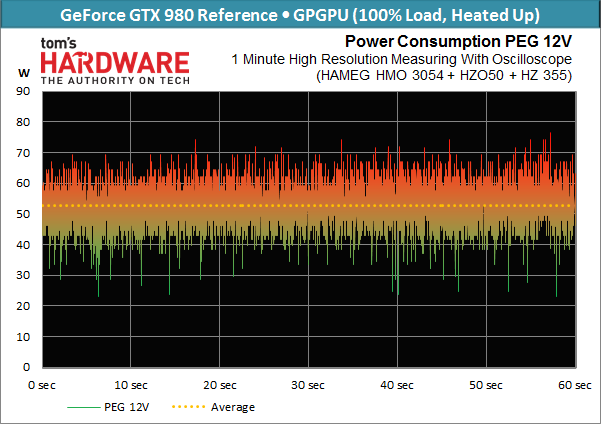

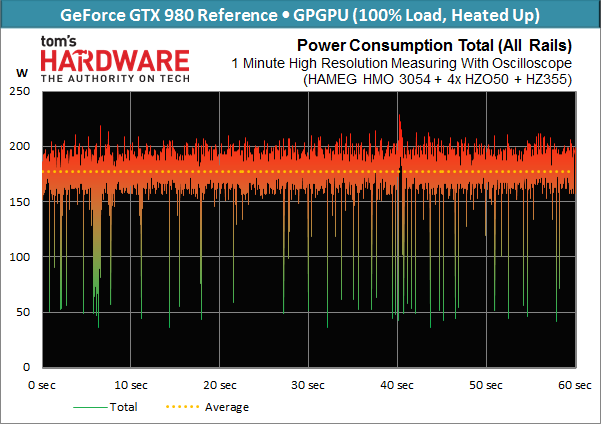
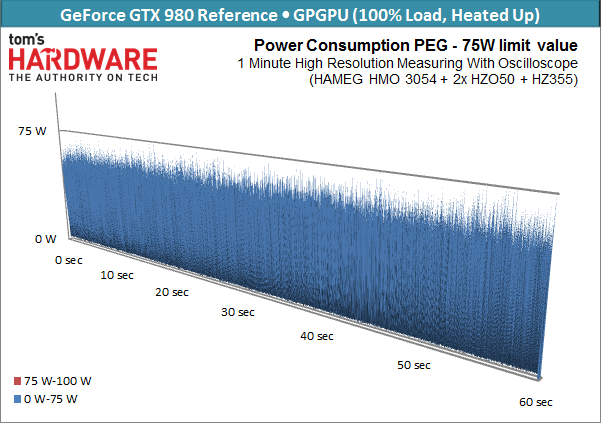
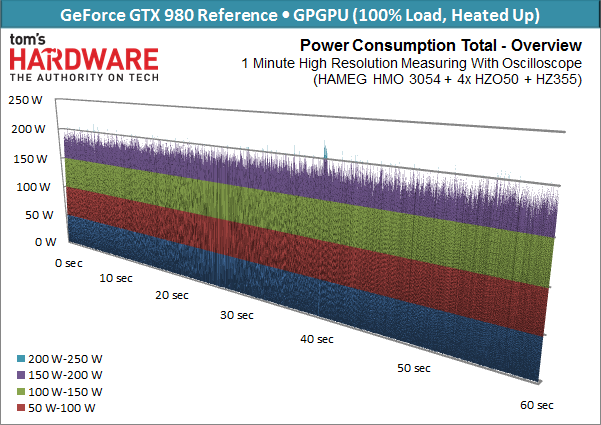
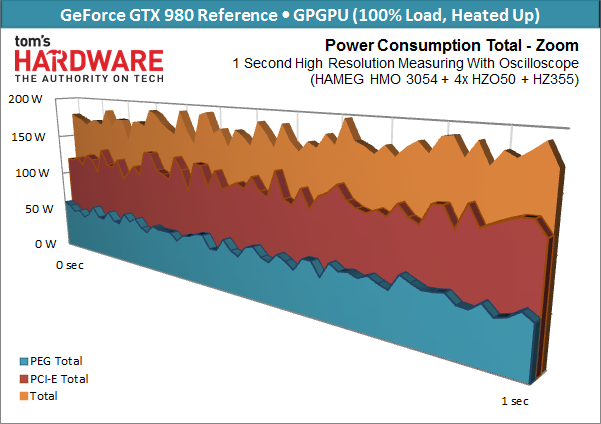
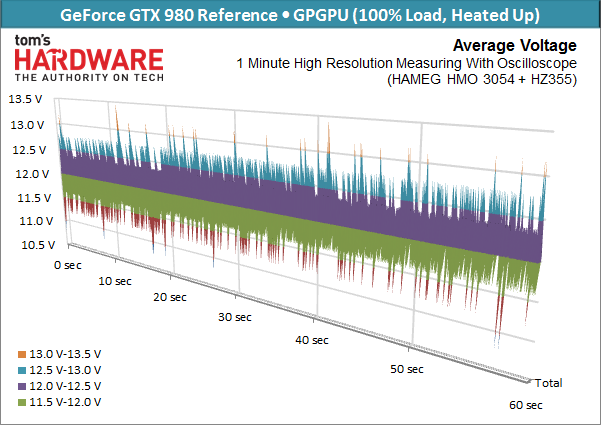
Gigabyte GTX 980 WindForce OC Measurement Results and Graphs
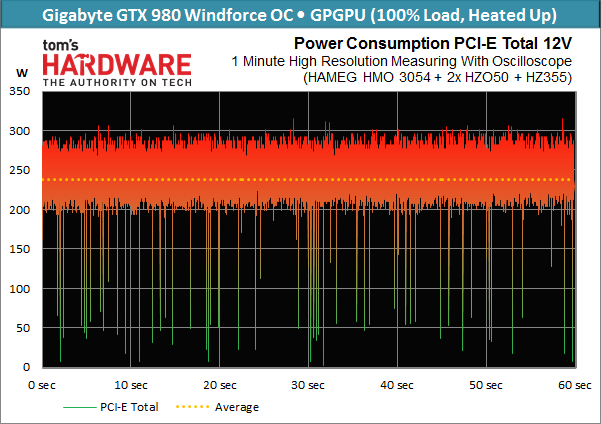
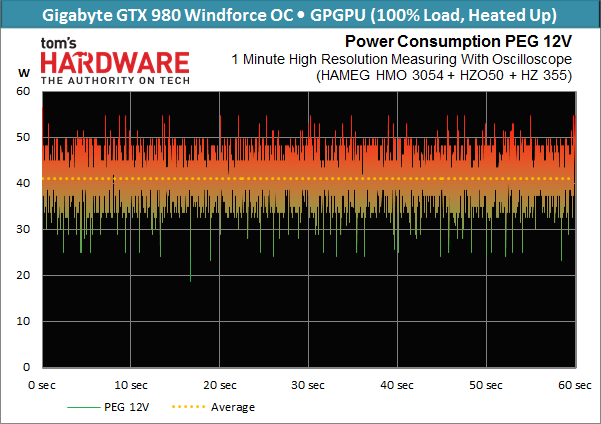
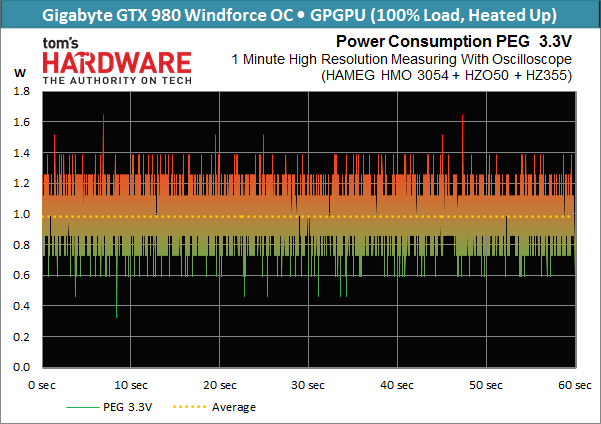
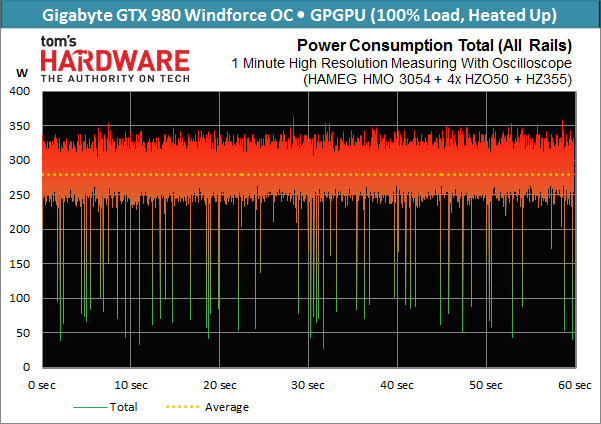
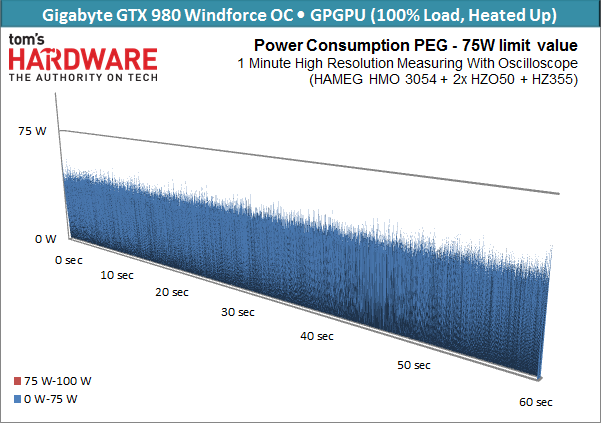
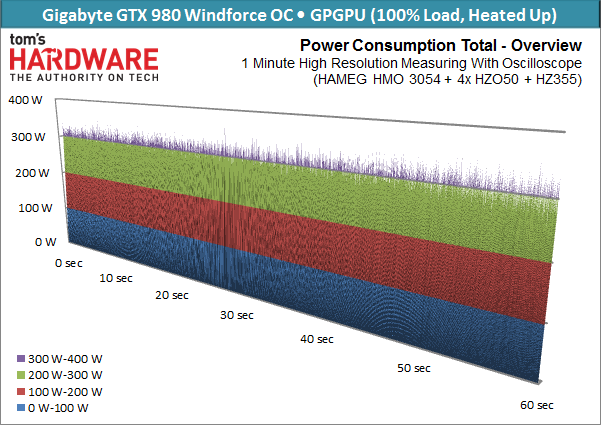
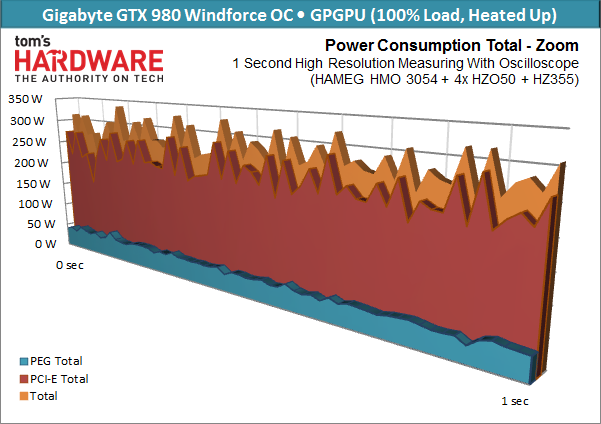
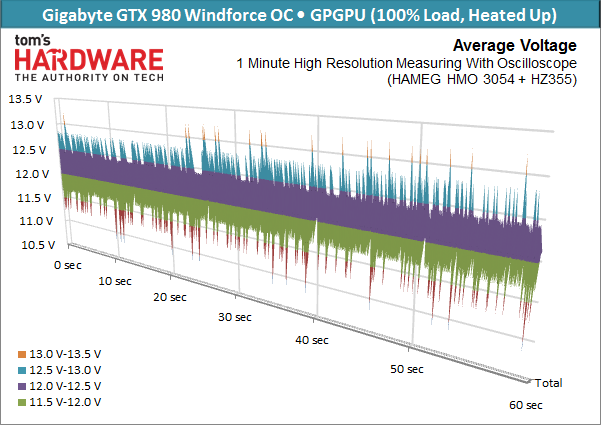
Gigabyte GTX 970 WindForce OC Measurement Results and Graphs
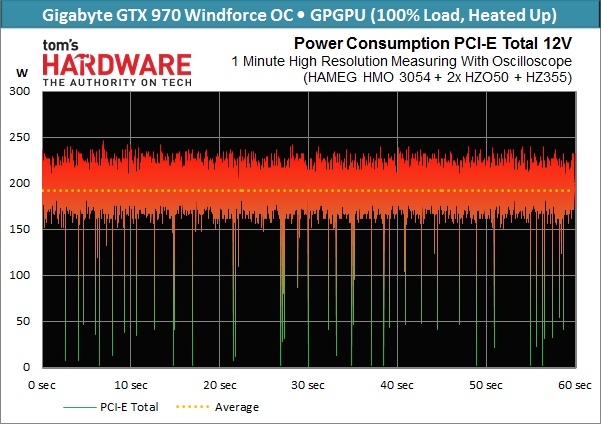
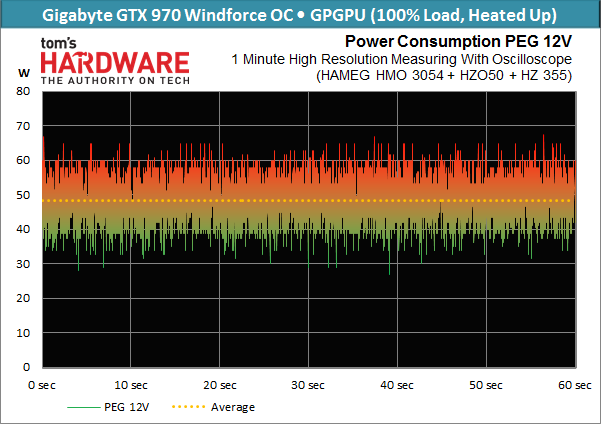
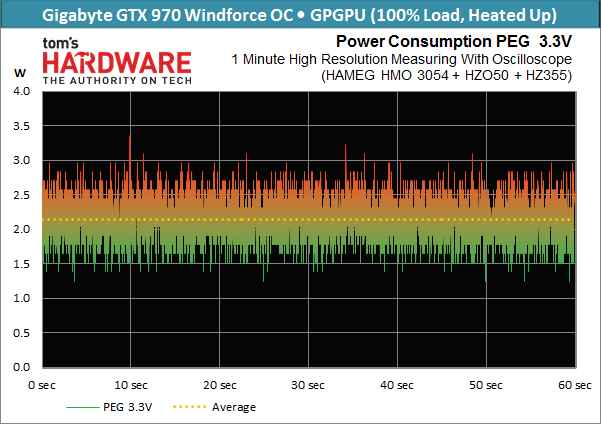
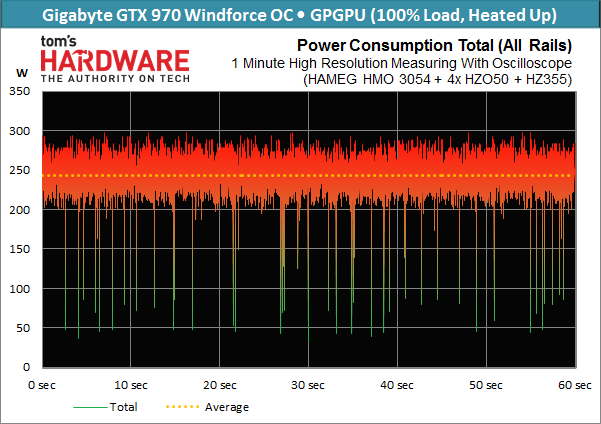
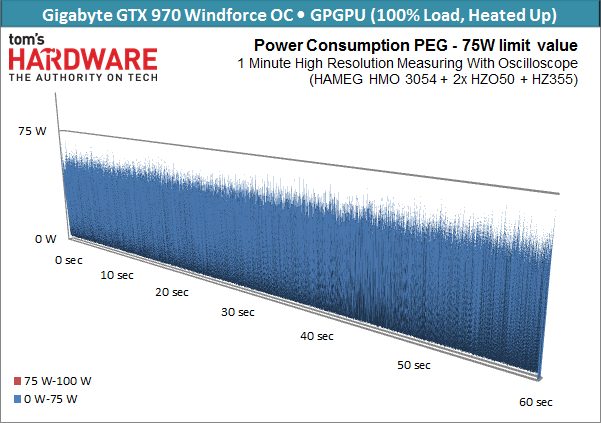
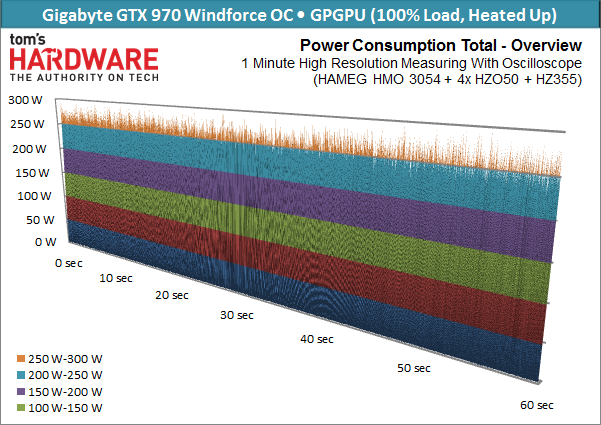
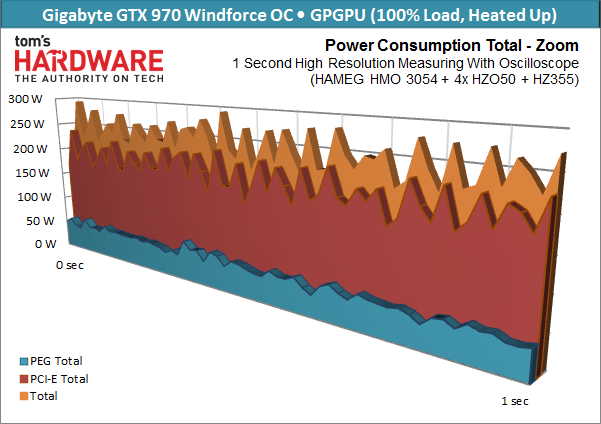
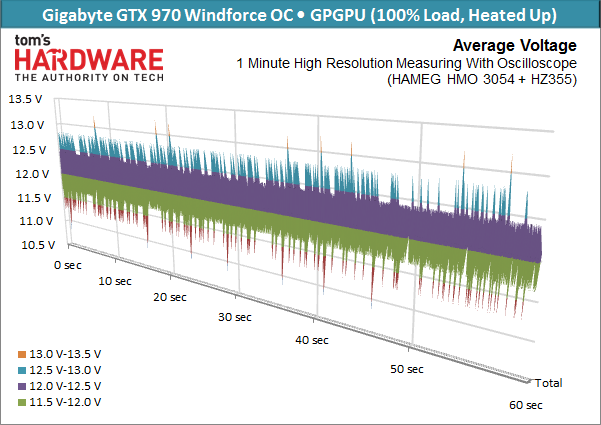
Maxwell’s performance can almost be compared to that of a compression tool. Already compressed data (our compute-heavy numbers) can’t be compressed any further, whereas text (games) can be compressed massively.
Current page: Power Consumption In Detail
Prev Page A New Power Consumption Test Setup Next Page Power Consumption Overview-
lancear15 I was waiting for Tom's review to make my final decision, the 980 is definitely going into my current 5960x build! I cant wait.Reply -
HKILLER so how long before you do a round up?i mean this time i've seen some pretty crazy looking cards (Zotac's Extreme AMP! edition looks crazy and the Inno3D too)and EVGA has shown off ACX 2.0 which they claim to be the most efficient GPU air cooler in the world...so many to choose from also EVGA FTW has been nicely overclocked i've seen it performing almost on par with 980Reply -
realibrad byt he way... Last page 2nd sentence after the graph of Avg game performance.Reply
I was hoping for more performance but the efficiency is quite nice. They just put pressure on the top end and gave us a price reduction, instead of overall performance gains. -
balister Very nice, but I still want to see what the power consumption along with what might be possible with the drop to 20nm (since this is still 28nm).Reply
Likely, we're going to see a Maxwell Titan equivalent come in the next year or so as these are a x04 much like Kepler with the 670/80s were and we're still going to be waiting to see what the x10 will be with the Maxwell architecture. -
MANOFKRYPTONAK Why didn't you include an overclocking comparison? Why didn't you include the 780, but included the 770? Doesn't make much sense...Reply -
vertexx 970 is the real story until the 980ti comes out - what a value proposition with the 970!Reply
Good stuff here - but you guys were a bit slow on this one. Tom's Hardware is the first site I visit every morning. But with the delay of this article, I've been all over the net this morning on other sites that got their stuff out sooner. -
daveys93 Will there be a follow-up article about overclocking these cards? Other sites are showing results that both of the new cards are capable of 1500+ MHz on air (aftermarket coolers and even a few with stock coolers), which is a massive overclock. Looks like NVIDIA left the door open for some decent voltage increases, but many results have been in the 1450-1500 MHz range at stock voltage. I am a big fan of the thoroughness of Tom's articles so I am very interested in seeing overclocking results and analysis from this site.Reply